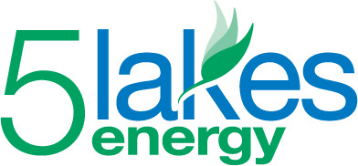By Jamie Scripps, Hunterston Consulting LLC
Jamie Scripps is a principal with Hunterston Consulting LLC, where she offers advanced energy policy expertise to clients across the Midwest, with a focus on Illinois, Indiana, Ohio, Minnesota and Wisconsin. Jamie’s standby rate research has been featured in proceedings throughout the Midwest and Mid-Atlantic, and she is a recognized expert on policies related to cogeneration. In 2016, Jamie was featured as a Midwest Energy News “40 under 40” awardee. Prior to founding Hunterston Consulting LLC, Jamie was a partner with 5 Lakes Energy LLC.
Utility-Owned Combined Heat & Power (CHP) Highlighted in DTE Rate Case
In its Order in the recent DTE general rate case no. U-20162, the Michigan Public Service Commission (MPSC) approved DTE’s request to develop a 34 MW combined heat & power (CHP) plant on the campus of Ford Motor Company’s Research and Engineering Center.[1] The plant will be owned by DTE Electric and constructed and operated by DTE Power and Industrial (DTE P&I).[2] The CHP plant will provide steam to the Ford Motor Company’s Research and Engineering Center and electricity to Ford Motor Company and other DTE Electric customers.[3] The CHP project will cost $62.3 million and is anticipated to be completed by December 31, 2019.[4]
It should come as no surprise that utilities like DTE are looking to ownership of CHP as a valuable option in their energy resource planning. Due to their size, high efficiency and grid benefits, utility-owned CHP projects offer a better deal to ratepayers than the construction of traditional central power stations. In their 2017 white paper, Utility Owned CHP— A Least-Cost Baseload Resource, ICF authors Anne Hampson and Dr. Bruce Hedman explain that utilities deploying CHP as a supply-side resource realize numerous gains over traditional centralized generation, including: [5]
- A shortened planning, permitting, and implementation process for CHP (2-3 years) versus that of a large-capacity central station generator (6-10 years);
- Reduced risk through smaller, high-efficiency CHP installations in the face of future utility loads that are difficult to forecast;
- Relieved congestion, potentially deferring the need for investments in transmission and distribution;
- In well-applied sites, the lowest levelized cost of energy (LCOE) among baseload supply options when thermal credit is applied to fuel costs.
DTE’s decision to invest in CHP aligns with a key finding from the 2018 Michigan CHP Roadmap report, in which the project team quantitatively modeled the optimized deployment of CHP in Michigan using the State Tool for Electricity Emissions Reduction (STEER) model, an integrated resource planning (IRP) model that calculates the least-cost resource portfolio to satisfy electricity demand. The STEER model was used to determine the cost and value of CHP as one of multiple resources in Michigan’s future energy mix. Depending on natural gas prices and the availability of renewable energy resources, STEER model results recommended an optimal level of additional CHP deployment in Michigan ranging from 722 Megawatts MW to 2.36 GW by 2030.[6] Considering how well CHP performs under various IRP modeling scenarios, and in light of PA 341 of 2016 requiring Michigan’s electric utilities to include the projected energy and capacity purchased or produced by the utility from a cogeneration resource in their IRPs going forward, we may see additional utility-owned CHP resources proposed in the future.
[1] MPSC, Case No. U-20162, Order dated May 2, 2019, p. 13
[2] Ibid.
[3] Ibid.
[4] Ibid.
[5] Anne Hampson, Dr. Bruce Hedman, ICF, Utility Owned CHP— A Least-Cost Baseload Resource (2017), available at https://www.icf.com/resources/white-papers/2017/utility-chp-ownership, p. 2
[6] Michigan Energy Office, CHP Roadmap for Michigan Report, February 2018, available at https://www.michigan.gov/documents/energy/CHP_Roadmap_for_Michigan_Full_Report_final_628532_7.pdf, p. 16, 57
